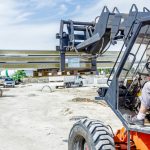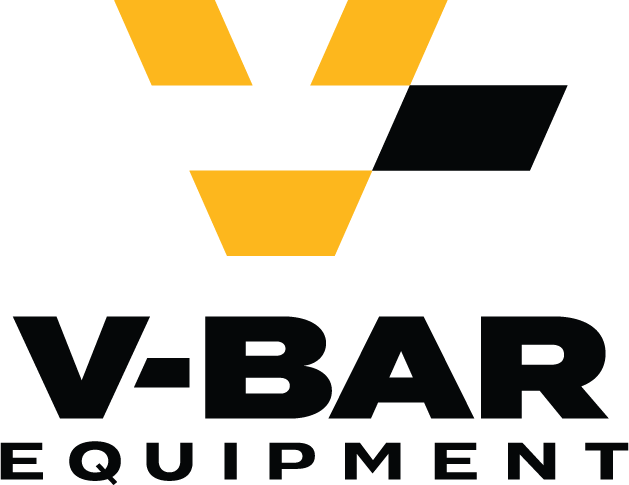Forklift vs Telehandler
January 16, 2024 6:14 pm Leave your thoughts In today’s industrial and construction sectors, the efficient movement of heavy objects and materials is crucial. Two commonly used heavy equipment for such purposes are forklifts and telehandlers. While both these machines serve the same purpose of lifting heavy loads, there are significant differences between them in terms of design, functionality, and versatility. Understanding these differences is essential to make an informed decision when selecting the right equipment for a specific job. Let’s explore the distinctions between forklifts and telehandlers and delve into their unique features and applications.
In today’s industrial and construction sectors, the efficient movement of heavy objects and materials is crucial. Two commonly used heavy equipment for such purposes are forklifts and telehandlers. While both these machines serve the same purpose of lifting heavy loads, there are significant differences between them in terms of design, functionality, and versatility. Understanding these differences is essential to make an informed decision when selecting the right equipment for a specific job. Let’s explore the distinctions between forklifts and telehandlers and delve into their unique features and applications.
Design and Construction:
One of the primary differences between forklifts and telehandlers lies in their design. Forklifts have a compact and rigid frame with a pair of forks attached to the front. These forks can be raised and lowered to lift loads from the ground and transport them horizontally. Forklifts have a counterweight at the back to ensure stability while lifting heavy loads.
Telehandlers, on the other hand, have a telescopic boom that can extend forward and upward to reach higher heights. This boom is attached to a rotating turret, enabling the telehandler to maneuver in confined spaces and lift loads at different angles. Telehandlers also have a stabilizing outrigger system, which enhances stability during operation.
Lifting Capacity and Reach:
When it comes to lifting capacity and reach, telehandlers typically far exceed forklifts. Forklifts, being primarily designed for horizontal movement, have a limited lifting capacity and reach. They are suitable for low to medium height tasks and are ideal for indoor work in warehouses and factories.
Telehandlers, with their telescopic boom and greater reach, can lift loads to significantly higher heights. They are well-suited for outdoor operations, such as construction sites and agricultural tasks, where there is a need to lift heavy loads to elevated areas.
Versatility and Applications:
While forklifts are specially designed for indoor tasks and limited to horizontal movement, telehandlers offer enhanced versatility and a range of applications. The telescopic boom of a telehandler allows it to reach over obstacles, making it ideal for loading and unloading materials from trucks and containers. Its ability to extend and rotate the boom also makes it useful for tasks such as placing roofing materials, lifting pallets, and even as a rough terrain forklift.
Forklifts, with their compact size and maneuverability, excel in warehouses and factories where space is limited. They are valuable assets for transporting goods within a confined area, loading and unloading pallets, and stacking shelves. Forklifts typically have different attachments available, such as clamps and rotators, which enhance their functionality for handling different types of loads.
Cost and Maintenance:
When considering the cost of ownership and maintenance, forklifts usually have a lower cost compared to telehandlers. Forklifts have been around for decades and are widely produced, leading to an accessible market and competitive prices. Furthermore, their simpler design and fewer movable parts make them easier to maintain.
Telehandlers, being more advanced and specialized machines, tend to have a higher upfront cost. They involve complex hydraulic systems, telescopic booms, and swiveling turrets, which all require regular maintenance. However, due to their versatility and ability to handle various tasks, telehandlers can often replace the need for multiple types of equipment, ultimately reducing overall costs.
Summary
While both forklifts and telehandlers are essential lifting machinery, they serve different purposes in the industrial and construction sectors. Forklifts are compact, reliable, and well-suited for indoor tasks and horizontal movement. On the other hand, telehandlers offer a greater lifting capacity, extended reach, and enhanced maneuverability, making them suitable for outdoor tasks and scenarios that require lifting heavy loads to elevated areas. Understanding the distinct features and applications of these machines is essential for choosing the right equipment that best suits the job at hand.
Need Heavy Equipment Experts in Abilene, TX?
At V-Bar Equipment Company, we offer a wide range of skid steer grapples to suit the diverse needs of our clients. From root grapples and rock grapples to brush grapples and industrial grapples, our inventory is stocked with high-quality attachments designed to handle different materials and applications. Visit our inventory page to explore the different types of grapples we offer. Our knowledgeable team is ready to assist you in selecting the perfect grapple attachment for your skid steer loader. Contact us today to learn more about what we can do for you!
Categorised in: Forklift Maintenance, Forklifts, Heavy Equipment, Telehandler Lifts
This post was written by admin
